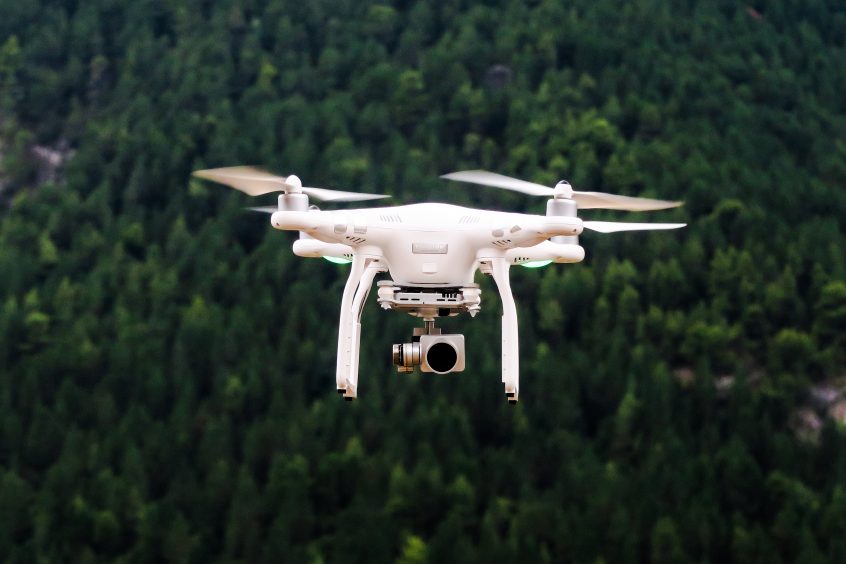The forestry industry has long integrated innovative approaches and new technology into its operations. After all, active forest management relies on the latest science and best practices to promote healthy, resilient forests. And just as active forest management is essential to practicing sustainable forestry, incorporating technology and new advances has helped foresters and working forests better manage their renewable resources.
Modern-day mills use lasers, sensors and computers to increase efficiency, improve worker safety and create zero waste so that every fiber of a harvested tree is used to produce building materials, paper products, energy from residuals and other wood products. Forested landowners use LiDAR (light detection and ranging) technology to capture a three-dimensional geographical image of an area that can include forest canopy, elevation contours and slope direction.
And increasingly, working forests are using unmanned aerial vehicles – also referred to as drones – to help manage and maintain healthy, resilient forests that benefit communities, the economy, wildlife and the environment.
Longtime Washington Forest Protection Association member Stimson Lumber has used drones for several years to help foresters gather real-time information on its managed lands. Through unmanned aerial systems, Simson Lumber foresters are able to count trees, map harvest units, monitor harvest operations, measure rock stockpile volumes, assess forest health and tree damage, and provide 3-D imaging. And Rayonier, which has timberland on the Olympic Peninsula, says that drones have become an important tool that has helped foresters respond swiftly to invasive plants and assess damage after a forest fire.
The Puget Sound Business Journal recently featured Drone Seed, a Seattle-based company that uses unmanned aerial vehicles to plant seedlings after harvests and wildfires. According to Drone Seed CEO Grant Canary to the PSBJ, unmanned aerial vehicles are able to reach steep terrain and other areas that can be difficult for people to access. Drone Seed’s Canary said he hopes that drones like his can be used in wildfire recovery efforts and begin reforestation within “30-60 days after a fire.”
Federal and state agencies also are finding uses for drones to support wildland firefighters, survey land when wildfire risk is particularly high and even fight the fires, according to a Crosscut article. And it’s likely that drone use will increase as foresters and forestland managers become better acquainted with unmanned aerial vehicle technology.
Said National Park Service Wildland Fire Management Chief Dan Buckley to Crosscut: “We’re finding more and more uses for the [drones] as far as surveillance, recon detection of hotspots and most recently, aerial firing devices, where we don’t have to put a person up in a helicopter.”
